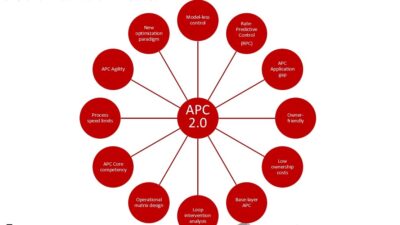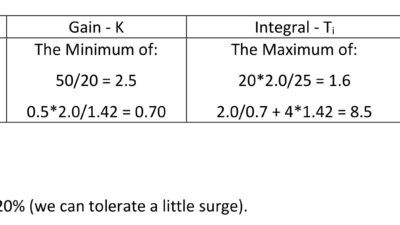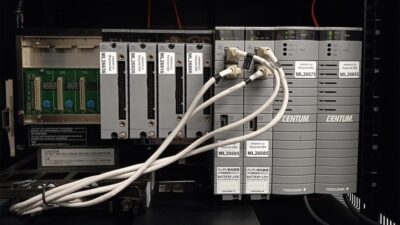Troy, Mich.–ControlNet International (Boca Raton, Fla.) announced multiple efforts June 9 to make its high-speed industrial network more attractive for end-users and OEMs. Initiatives include dropping silicon prices more than 75% and enhancing ControlNet services over Ethernet, first introduced in March 1998.
Troy, Mich. –ControlNet International (Boca Raton, Fla.) announced multiple efforts June 9 to make its high-speed industrial network more attractive for end-users and OEMs. Initiatives include dropping silicon prices more than 75% and enhancing ControlNet services over Ethernet, first introduced in March 1998.
“We realize there’s a stampede of interest in Ethernet. We want to lead, not get run over,” says Bill Moss, ControlNet’s executive director. Mr. Moss adds that an industrial network, specifically ControlNet, offers other advantages for many applications, including a more industrial physical medium, topographical differences, determinism, and repeatability.
During its third annual meeting here, ControlNet announced it will:
-
Slash the price of ControlNet silicon from U.S. $44 to $10 or less per chip by 4Q99;
-
Drop annual member fees immediately for larger organizations from U.S. $10,000 or $15,000 to $5,000 .
-
Continue efforts to include ControlNet specifications in European national, regional, and global standards efforts, so as not to exclude ControlNet from public projects in some markets;
-
Enhance specifications in final form by Nov. 30 by adding “real-time I/O” (implicit messaging) to existing explicit messaging capabilities. This allows “simultaneous management of configuration, collection, and control tasks on the same wire.” Implicit messaging also reduces processing time in the node by reducing overhead data, which enhances time-critical control performance, says Dave VanGompel, a ControlNet member. Ability to concurrently provide both types of message is not native to Ethernet and can only be achieved with ControlNet services, he adds;
-
Form an Ethernet working group to rapidly address related issues; and
-
Release guidelines for using Ethernet in industrial applications.
In other news, a day before the ControlNet meeting, the recently formed Automotive Special Interest Group (SIG) unveiled its new weld- and robot-controller device profiles. These define each device’s object model, I/O data format, and configurable parameters and will be added to the ControlNet specification and used by suppliers to build interoperable products. Automotive SIG will also add device-specific data to ControlNet’s conformance testing suite. The group’s members include: Honda; Kawasaki; Weltronics; ABB Robotics; Ford and General Motors.
For more information on ControlNet International initiatives, visit www.controleng.com/freeinfo .
| Author Information |
| Mark T. Hoske, editor-in-chief, [email protected] . |
Advice on using Ethernet in industry
For users applying Ethernet in industrial applications, ControlNet International members recommend:
Using more reliable (and costly) switches and routers instead of hubs;
Putting controllers and their associated I/O points on the same subnetwork;
Restricting office traffic from networks with I/O traffic, which avoids inconsistencies in addressing and network overloading; and
Being careful when buying because Ethernet chips vary in multicast support.
Some end-users and OEMs add that making Ethernet reliable for industrial applications can increase costs. For example, a $49 Ethernet card suitable for office use could have a drastically shorter life in industrial temperatures. The card may also require use of an Intel Pentium-level chip (on the board or with an associated PC) to handle communications in some applications, which can add an additional $600-$1,000.




